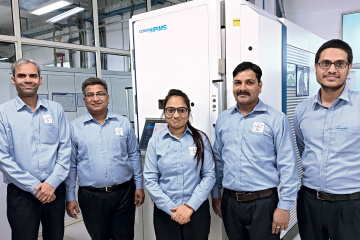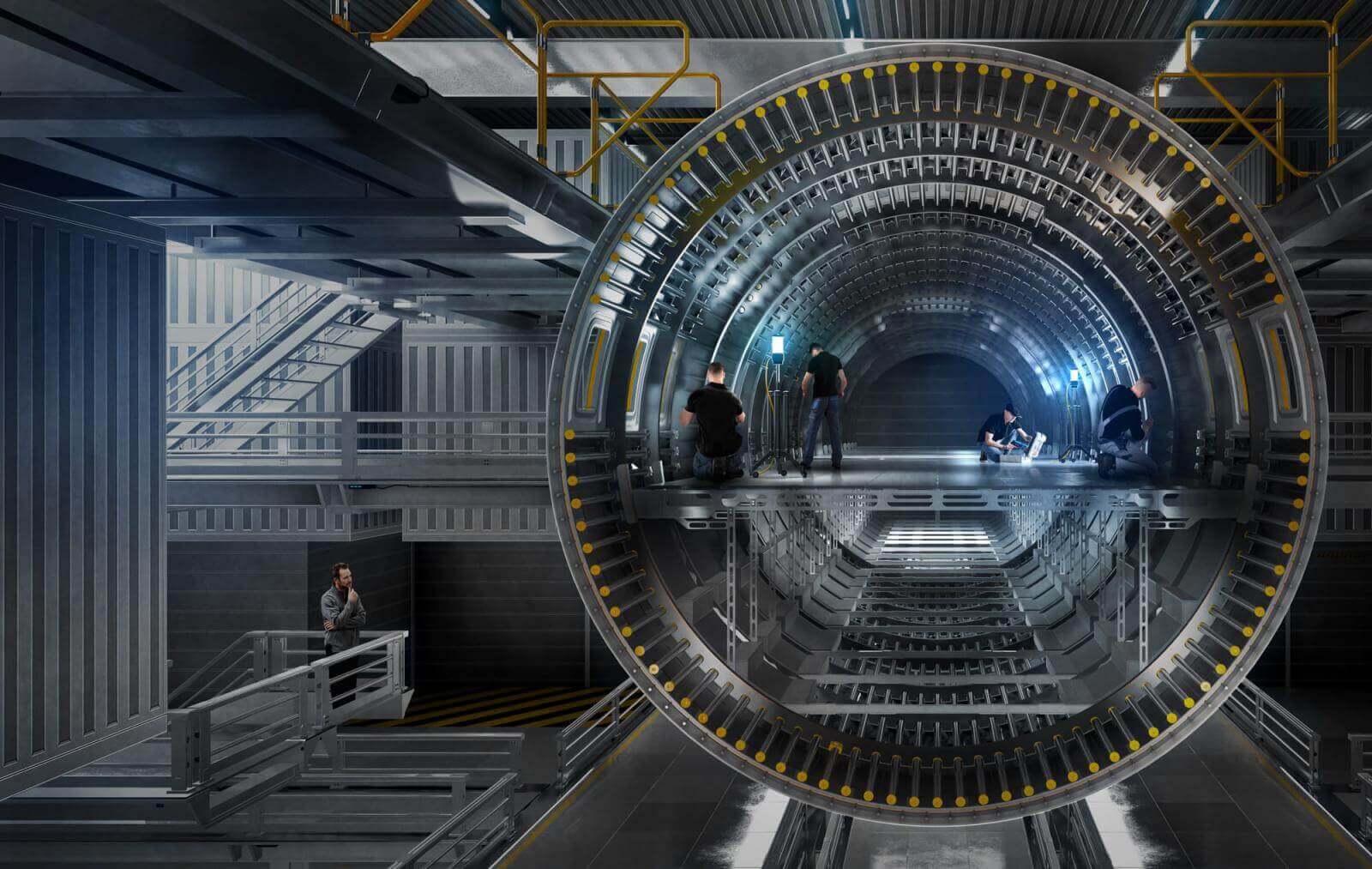
The Cutting Edge on Tool Coatings
Source: SME, by Thom Cannell Contributing Editor

Incremental changes highlight recent advances in the wake of severe supply chain challenges
Given supply chain fragility, changes are inevitable but not universal, and some are affected more than others. No industry is immune, yet the tooling sector and its requirement for high-quality metals, rare earths, and exotic and conventional gases may be particularly exposed to supplier disruptions.
This has led to ongoing advances in tooling technologies, albeit mostly incremental, which in turn drives similar innovations among coating suppliers. In addition, the importance of improved quality and strong relationships has renewed interest in sustainability and accelerated internal innovation. Another trend: greater customization.
Customized Coatings
CemeCon Inc., Big Flats, N.Y., is fielding more requests for application-specific coatings based on customer needs. And the trend is expected to increase in coming years.
“Certainly, there is still standard tooling—that’s kind of the bedrock of the tooling industry—but tool manufacturers are getting requests for unique geometries for special applications,” said Sales Manager Ryan Lake. “End users are coming out with new alloys, new challenges. And we must determine how to continue to optimize our products for those special (applications).”
The shift applies to the wide range of coating thicknesses the company offers, which it claims covers more than 80 percent of applications. “So now it becomes how do we optimize our coatings with thicknesses, pre-treatments, and cleaning to help our customers address those special needs?” Lake added.
Ben Johnson, inserts production manager of Sandvik Coromant’s Westminster, S.C., plant, sees the market switching from chemical vapor deposition (CVD) to physical vapor deposition (PVD) and then a reverse back due to improvements in CVD and changes in oxide coatings. As a result, he said, Sandvik is “significantly investing in r&d to develop equipment that gives us a competitive advantage where we can develop our own coatings.”
First up is a newly developed type of CVD furnace being deployed to select production units, according to Johnson. “It utilizes ultra-low pressure and will provide new capabilities, especially for the demand that we’ve seen with texture coating in CVD,” he continued.
Expanding Performance Demands
The high-strength materials, harsh environments, and demanding requirements in aerospace and defense applications are well documented.
But now such requirements are spreading across other markets, such as automotive and energy, noted Osny Fabricio, head of cutting tools for Liechtenstein-based Oerlikon Balzers Ltd.
“We are talking about high-temp alloys like titanium and Inconel, which is nothing new,” Fabricio said. “But we also see a tendency on the machining sites to apply more sophisticated toolpath strategies to maximize MRR (metal removal rate).
“In parallel,” he continued, “the toolmakers can now offer more complex geometries while enhancing the tool performance due to the number of flutes, optimized helix angles, and better chip evacuation. And as the market is moving in that direction, the PVD coatings are moving in the same direction, but at a higher speed, while offering a variety of high-performance premium solutions, with consistency and quality.”
Manufacturing speeds are increasing, and geometries for cutting titanium are getting more complex. To keep pace, Fabricio said, substrates are evolving with these new geometries, new CAD and CAM strategies for machining are introduced, and coatings are giving these tools the capability to run faster, to minimize wear, and to be able to start and finish cuts with a single tool.
Sandvik’s new furnace, operating at ultra-low pressures, allows for more temperature variations, Johnson said, and “may improve the consistency and quality of the products that we produce.
“The more we can reduce variation, the more predictability increases for the customer in terms of performance,” he added. “When you’re a high-volume operation like we are, producing millions of inserts, if we can from a statistical standpoint reduce the amount of variability in the products and increase confidence that the customer has in the product that they’re using, it furthers customer loyalty, improves relationships, and delivers a better overall customer experience.”
Fabricio echoed this sentiment: “Customers expect not just performance, but also consistency. Consistency is probably even more important than performance, as they need to be sure that the tool will support their demanding applications without failing while maintaining consistent surface quality. They must know that specific PVD coating, that tool geometry, will deliver the same results day in and day out. So, consistency, I would say, is one of the major points for today’s demanding markets and customers.”
The tooling industry is constantly reinventing itself to respond to customer needs, CemeCon’s Lake acknowledged. “So then, how do our coatings need to align to help give the best product? It’s not just a coating, it’s not just geometry, and it’s not just carbide. It’s all three of those things working together that make a tool successful.”
Product offerings, including coating combinations, should be driven by customer demand, he asserted. “It’s listening to the customers and saying, this is what we need to do in this circumstance.”
Sustainability and Production
Even pre-pandemic, developing strategies for sustainability within the tooling industry was increasingly consequential. Citing Sandvik’s motto of “People, Planet and Profit,” Johnson said the planet portion focuses on the company’s green factory initiatives, particularly the use of chemicals. This includes scrubbing exhaust gases as well as lessening environmental footprints, energy consumption, and water consumption.
Sandvik’s Westminster plant has invested in ethanol distillation over the last two years, and has “100 percent circularity” of the chemical, Johnson said. “We never have to purchase ethanol again, which gives us independence from global sources, saving cost and improving sustainability.”
Such initiatives can have a broad impact and need to be adopted across the global manufacturing industry, advised Inka Harrand, product management coating service cutting inserts for CemeCon AG in Germany. She said all manufacturers are obligated to design production processes in an economically and ecologically sensible manner.
“Cutting tool manufacturers have three levers at their disposal within their sustainability strategy: tool solutions, tool manufacturing, and machining strategies,” Harrand explained. “Tool coatings contribute significantly to the sustainable design of the machining process and are an indispensable building block for the cutting tool manufacturer, because they extend the product tool life and reduce the production of new (products) and the disposal or recycling of old products.”
Oerlikon extends its sustainability efforts beyond minimizing gases and chemicals used in multiple processes for environmental and employee safety to using hybrid and electric vehicles with more efficient routing of customer delivery and pickup. Added Fabricio, “Even the chemicals that we use, we are always researching for something that is less aggressive or that is more environmentally friendly to be sure that we are in sync with global expectations for companies that use this kind of technology.”
The Innovation Advantage
While specific challenges, and opportunities continue to evolve, the need for innovation remains constant. This includes demands for better performance, longer tool life, and improved manufacturing techniques.
For example, CemeCon’s design goals remain longer tool life at higher speeds, a more cost-effective tool design, and less waste, i.e., finer cuts, according to Manfred Weigand, product management for the company’s coating service-round tools. What’s changed, he noted, are manufacturing parameters, such as advances in CAD/CAM, which have led to refinements in tool geometry and coatings. This increases the importance for coatings to be optimally adapted to tool geometry.
CemeCon’s North American operations can, depending on tool type, provide coating thicknesses of one to 12 microns. Meanwhile, edge preparation is becoming increasingly important.
“(It’s) a conversation we have with customers now, due to different coating solutions we offer, and it’s not something we did even four or five years ago,” said CemeCon President Jeff Barlow. “Previously, a concern about edge prep was really for thicker coatings on inserts, and that’s really where it ended. Now it’s expanded to round tools.”
Plans have changed recently, he said, to factor in the materials being machined, and the thickness and composition of the coating. Customers want to know what type of edge preparation is needed on a drill or end mill “to make the coating and tool really shine.”
While Oerlikon typically avoids proprietary coatings, it doesn’t rule them out. One example is a coating developed and cyclically improved for an aerospace customer, which Fabricio described as “a coating for a tailor-made geometry” with a unique edge preparation.
Whether it’s Boeing, Lockheed, GE, or SpaceX, A&D manufacturers need enhanced tool life for extreme materials. For instance, Inconel, a nickel and chromium alloy typically used for rocket engines, is both physically hard and hard to machine. The right tools with proper geometries are critical in failure prevention and efficient machining. As a result, toolmakers committed to this market are equally dedicated to premium solutions with high performance, high speeds, and feed rates for efficiency.
Recipes for Change
Tool coatings, the recipes and how they are deposited, are dedicated to extending tool life regardless of speed or geometry, stressed Christoph Schiffers, product management for CemeCon’s coating equipment. “In general, the desire to reduce CO₂ emissions greatly stimulates the innovation process with regard to new products and processes on the market,” he said. “In this context, the CemeCon HiPIMS (high-power-pulsed-magnetron-sputtering) technology makes it possible to deposit almost every element of the periodic table of elements onto a substrate.”
The Innovation Advantage
While specific challenges, and opportunities continue to evolve, the need for innovation remains constant. This includes demands for better performance, longer tool life, and improved manufacturing techniques.
For example, CemeCon’s design goals remain longer tool life at higher speeds, a more cost-effective tool design, and less waste, i.e., finer cuts, according to Manfred Weigand, product management for the company’s coating service-round tools. What’s changed, he noted, are manufacturing parameters, such as advances in CAD/CAM, which have led to refinements in tool geometry and coatings. This increases the importance for coatings to be optimally adapted to tool geometry.
CemeCon’s North American operations can, depending on tool type, provide coating thicknesses of one to 12 microns. Meanwhile, edge preparation is becoming increasingly important.
“(It’s) a conversation we have with customers now, due to different coating solutions we offer, and it’s not something we did even four or five years ago,” said CemeCon President Jeff Barlow. “Previously, a concern about edge prep was really for thicker coatings on inserts, and that’s really where it ended. Now it’s expanded to round tools.”
Plans have changed recently, he said, to factor in the materials being machined, and the thickness and composition of the coating. Customers want to know what type of edge preparation is needed on a drill or end mill “to make the coating and tool really shine.”
While Oerlikon typically avoids proprietary coatings, it doesn’t rule them out. One example is a coating developed and cyclically improved for an aerospace customer, which Fabricio described as “a coating for a tailor-made geometry” with a unique edge preparation.
Whether it’s Boeing, Lockheed, GE, or SpaceX, A&D manufacturers need enhanced tool life for extreme materials. For instance, Inconel, a nickel and chromium alloy typically used for rocket engines, is both physically hard and hard to machine. The right tools with proper geometries are critical in failure prevention and efficient machining. As a result, toolmakers committed to this market are equally dedicated to premium solutions with high performance, high speeds, and feed rates for efficiency.
Recipes for Change
Tool coatings, the recipes and how they are deposited, are dedicated to extending tool life regardless of speed or geometry, stressed Christoph Schiffers, product management for CemeCon’s coating equipment. “In general, the desire to reduce CO₂ emissions greatly stimulates the innovation process with regard to new products and processes on the market,” he said. “In this context, the CemeCon HiPIMS (high-power-pulsed-magnetron-sputtering) technology makes it possible to deposit almost every element of the periodic table of elements onto a substrate.”
Meanwhile, Oerlikon’s 2020 acquisition of D-Coat GmbH enhanced its abilities to meet growing demands for diamond coatings. “We have incorporated D-Coat’s technology and best practices for our current diamond coatings,” Fabricio said, “and we can provide a solution for the most demanding operation posed by the machining of composites you may experience.”
Fabricio also touted a new PVD deposition process called Baliq S3p (Scalable Pulsed Power Plasma), which is the next step in the evolution of HiPIMS processes.
Results show that Baliq coatings will minimize deposition of droplets, making the coating, or the coating surface, smoother, according to the company. This reduces friction and therefore reduces the wear, generating less heat, Fabricio explained. The reduced temperature will deliver either a longer tool life or it could be re-equalized, increasing the SFM to reduce the cycle time, he added.
Special Circumstance
CemeCon is a pioneer of HiPIMS and offers this PVD variation as a contract coater, as well as turnkey systems. The launch of HiPIMS in 2016 was a game changer, according to Lake. “The coating came out much denser and we were increasing hardness and toughness properties to levels that people had not seen before,” he said, adding this spurred growth in HiPIMS worldwide, both in coating service and technology sales. Both Lake and Barlow view HiPIMS as the first expansion of coating technology possibly in decades.
While CemeCon tends to offer a selection of standard products, the company makes exceptions for equipment sales. “We can make changes, different coatings, different combinations, different edge preps. We offer (those customers) a solution to their problem through equipment sales,” Lake said.
Finally, out of left field comes an interesting idea for improving workstation efficiency: color-coating production tools. For this, Fabricio suggested the Baliq Unique coatings line with approximately 30 different colors available, “If you have a dimensionally similar tool or left- and right-hand tools—traditionally this is a point of error—you could use color to aid operators.”
Another use of coating color would be to associate the tool’s color with a group of workpiece materials. For example, Fabricio said, blue for steel, yellow for stainless steel, and red for cast iron. “Imagine that you can have a drill or end mill or insert and just by the color eliminate the need for any kind of cutting guide, manual, or catalog for guidance, and only by seeing the color you know what that particular tool was developed for.”
以 PDF 格式下载 FACTS 故事 所有 FACTS 杂志概览 (PDF)
